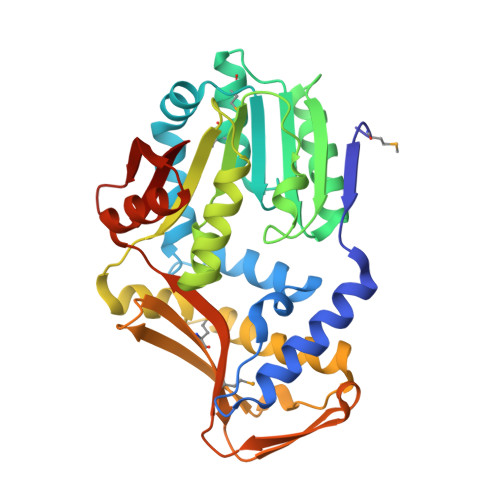Ergothioneine Biosynthetic Methyltransferase EgtD Reveals the Structural Basis of Aromatic Amino Acid Betaine Biosynthesis.
Vit, A., Misson, L., Blankenfeldt, W., Seebeck, F.P.(2015) Chembiochem 16: 119-125
- PubMed: 25404173
- DOI: https://doi.org/10.1002/cbic.201402522
- Primary Citation of Related Structures:
4PIM, 4PIN, 4PIO, 4PIP - PubMed Abstract:
Ergothioneine is an N-¦Á-trimethyl-2-thiohistidine derivative that occurs in human, plant, fungal, and bacterial cells. Biosynthesis of this redox-active betaine starts with trimethylation of the ¦Á-amino group of histidine. The three consecutive methyl transfers are catalyzed by the S-adenosylmethionine-dependent methyltransferase EgtD. Three crystal structures of this enzyme in the absence and in the presence of N-¦Á-dimethylhistidine and S-adenosylhomocysteine implicate a preorganized array of hydrophilic interactions as the determinants for substrate specificity and apparent processivity. We identified two active site mutations that change the substrate specificity of EgtD 10(7)-fold and transform the histidine-methyltransferase into a proficient tryptophan-methyltransferase. Finally, a genomic search for EgtD homologues in fungal genomes revealed tyrosine and tryptophan trimethylation activity as a frequent trait in ascomycetous and basidomycetous fungi.
Organizational Affiliation:
3Structure and Function of Proteins, Helmholtz Centre for Infection Research, Inhoffenstrasse 7, 38124 Braunschweig (Germany); Previous address: Department of Biochemistry, University of Bayreuth, Universit?tsstrasse 30, 95447 Bayreuth (Germany).
















